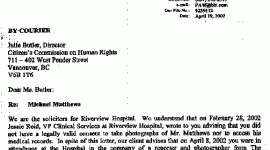Compilation of EMDR Studies
There are more controlled studies on EMDR than on any other method used in the treatment of PTSD (Shapiro, 1995a,b, 1996). A literature review indicated only 6 other controlled clinical outcome studies (excluding drugs) in the entire field of PTSD (Solomon, Gerrity, and Muff, 1992).
The following controlled EMDR studies have been completed:
-
Boudewyns, Stwertka, Hyer, Albrecht, and Sperr (1993). A pilot study randomly assigned 20 chronic inpatient veterans to EMDR, exposure, and group therapy conditions and found significant positive results from EMDR for self-reported distress levels and therapist assessment. No changes were found in standardized and physiological measures, a result attributed by the authors to insufficient treatment time considering the secondary gains of the subjects who were receiving compensation. Results were considered positive enough to warrant further extensive study, which has been funded by the VA. Preliminary reports of the data (Boudewyns & Hyer, 1996) indicate that EMDR is superior to a group therapy control on both standard psychometrics and physiological measures.
-
. Carlson, et al. (1998) tested the effect of EMDR on chronic combat veterans suffering from PTSD since the Vietnam War. Within 12 session subjects showed substantial clinical improvement, with a number becoming symptom-free. EMDR proved superior to a biofeedback relaxation control group and to a group receiving routine VA clinical care. Results were independently evaluated on CAPS-1, Mississippi Scale for PTSD, IES, ISQ, PTSD Symptom Scale, Beck Depression Inventory, and STAI.
-
. Jensen (1994). A controlled study of the EMDR treatment of 25 Vietnam combat veterans suffering from PTSD, as compared to a non-treatment control group, found small but statistically significant differences after two sessions for in-session distress levels, as measured on the SUD Scale, but no differences on the Structured Interview for Post-traumatic Stress Disorder (SI-PTSD), VOC, GAS, and Mississippi Scale for Combat-Related PTSD (M-PTSD; Jensen, 1994). Two psychology interns who had not completed formal EMDR training did this study. Furthermore, the interns reported low fidelity checks of adherence to the EMDR protocol and skill of application, which indicated their inability to make effective use of the method to resolve the therapeutic issues of their subjects.
-
 Marcus et al. (1996) evaluated sixty-seven individuals diagnosed with PTSD in a controlled study funded by Kaiser Permanente Hospital. EMDR was found superior to standard Kaiser Care which consisted of combinations of individual, and group therapy, as well as medication. An independent evaluator assessed participants on the basis of the Symptom Checklist-90, Beck Depression Inventory, Impact of Event Scale, Modified PTSD Scale, Spielberger State-Trait Anxiety Inventory, and SUD.
Marcus et al. (1996) evaluated sixty-seven individuals diagnosed with PTSD in a controlled study funded by Kaiser Permanente Hospital. EMDR was found superior to standard Kaiser Care which consisted of combinations of individual, and group therapy, as well as medication. An independent evaluator assessed participants on the basis of the Symptom Checklist-90, Beck Depression Inventory, Impact of Event Scale, Modified PTSD Scale, Spielberger State-Trait Anxiety Inventory, and SUD. -
Pitman et al. (1996). In a controlled component analysis study of 17 chronic outpatient veterans, using a crossover design, subjects were randomly divided into two EMDR groups, one using eye movement and a control group that used a combination of forced eye fixation, hand taps, and hand waving. Six sessions were administered for a single memory in each condition. Both groups showed significant decreases in self-reported distress, intrusion, and avoidance symptoms.
-
Renfrey and Spates (1994). A controlled component study of 23 PTSD subjects compared EMDR with eye movements initiated by tracking a clinician's finger, EMDR with eye movements engendered by tracking a light bar, and EMDR using fixed visual attention. All three conditions produced positive changes on the CAPS, SCL-90-R, Impact of Event Scale, and SUD and VOC scales. However, the eye movement conditions were termed "more efficient."
-
. Rothbaum (1997) the controlled study of rape victims found that, after three EMDR treatment sessions, 90% of the participants no longer met full criteria for PTSD. An independent assessor evaluated these results on the PTSD Symptom Scale, Impact of Event Scale, Beck Depression Inventory, and Dissociative Experience Scale.
-
Scheck et al. (1998) Sixty females ages 16-25 screened for high-risk behavior and traumatic history were randomly assigned to two session of either EMDR or active listening. There was substantially greater improvement for EMDR as independently assessed on the Beck Depression Inventory, State-Trait Anxiety Inventory, Penn Inventory for Post-Traumatic Stress Disorder, Impact of Event Scale, and Tennessee Self-Concept Scale. Although the treatment was comparatively brief, the EMDR treated participants came within the first standard deviation compared to non-patient norm groups for all five measures.
-
Shapiro (1989a). The initial controlled study of 22 rape, molestation, and combat victims compared EMDR and a modified flooding procedure that was used as a placebo to control for exposure to the memory and to the attention of the researcher. Positive treatment effects were obtained for the treatment and delayed treatment conditions on SUDs and behavioral indicators, which were independently corroborated at 1- and 3-month follow-up sessions.
-
Vaughan, Armstrong, et al. (1994). In a controlled comparative study, 36 subjects with PTSD were randomly assigned to treatments of (1) imaginal exposure, (2) applied muscle relaxation, and (3) EMDR. Treatment consisted of four sessions, with 60 and 40 minutes of additional daily homework over a 2- to 3-week period for the image exposure and muscle relaxation groups, respectively, and no additional homework for the EMDR group. All treatments led to significant decreases in PTSD symptoms for subjects in the treatment groups as compared to those on a waiting list, with a greater reduction in the EMDR group, particularly with respect to intrusive symptoms.
-
D.Wilson, Covi, Foster, and Silver (1996). In a controlled study, 18 subjects suffering from PTSD were randomly assigned to eye movement, hand tap, and exposure-only groups. Significant differences were found using physiological measures (including galvanic skin response, skin temperature, and heart rate) and the SUD Scale. The results revealed, with the eye movement condition only, a one-session desensitization of subject distress and an automatically elicited and seemingly compelled relaxation response, which arose during the eye movement sets.
-
S.Wilson, Becker, and Tinker (1995). A controlled study randomly assigned 80 trauma subjects (37 diagnosed with PTSD) to treatment or delayed-treatment EMDR conditions and to one of five trained clinicians. Substantial results were found at 30 and 90 days and 12 months post treatment on the State-Trait Anxiety Inventory, PTSD-Interview, Impact of Event Scale, SCL-90-R, and the SUD and VOC scales. Effects were equally large whether or not the subject was diagnosed with PTSD.
Nonrandomized studies involving PTSD symptomatology include:
-
An analysis of an inpatient veterans' PTSD program (n=100) compared EMDR, biofeedback, and relaxation training and found EMDR to be vastly superior to the other methods on seven of eight measures (Silver, Brooks, & Obenchain, 1995).
-
A study of Hurricane Andrew survivors found significant differences on the Impact of Event Scale and SUD scales in a comparison of EMDR and non-treatment conditions (Grainger, Levin, Allen-Byrd, Doctor & Lee, in press).
-
A study of 60 railroad personnel, suffering from high-impact critical incidents, compared a peer counseling debriefing session alone to a debriefing session that included approximately 20 minutes of EMDR (Solomon & Kaufman, 1994). The addition of EMDR produced substantially better scores on the Impact of Event Scale at 2- and 10-month follow-ups.
-
Research at Yale Psychiatric Clinic conducted by Lazrove et al. (1995) indicated that all symptoms of PTSD were relieved within three sessions for single-trauma victims as independently assessed on standard psychometrics.
-
Of 445 respondents to a survey of trained clinicians who had treated over 10,000 clients, 76% reported greater positive effects with EMDR than with other methods they had used. Only 4% found fewer positive effects with EMDR (Lipke, 1994).
Recent EMDR Studies
Studies with single trauma victims indicate that after three sessions 84 - 90% of the subjects no longer meet the criteria for PTSD.
The Rothbaum (1997) study found that, after three EMDR sessions, 90% of the participants no longer met full criteria for PTSD. In a test of subjects whose responses to EMDR were reported by Wilson, Becker & Tinker (1995a), it was found that 84% (n=25) of the participants initially diagnosed with PTSD still failed to meet criteria at 15 month follow-up (Wilson, Becker & Tinker, 1997). Similar data were reported by Marcus et al. (1997), Scheck et al. (1998) and by Lazrove et al. (1995) in a recent systematically evaluated case series. While one subject dropped out very early in the study, of the seven subjects who completed treatment (including mothers who had lost their children to drunken drivers), none met PTSD criteria at follow-up.
next: Morning After' Pill Helps Psychotic Depression: Study
~ depression library articles
~ all articles on depression
APA Reference
Gluck, S.
(2008, December 27). Compilation of EMDR Studies, HealthyPlace. Retrieved
on 2026, January 14 from https://www.healthyplace.com/depression/articles/compilation-of-emdr-studies



